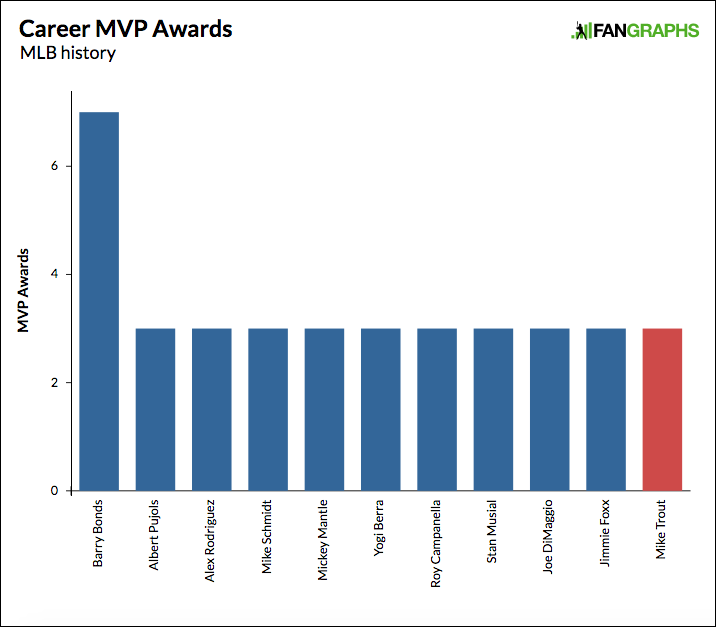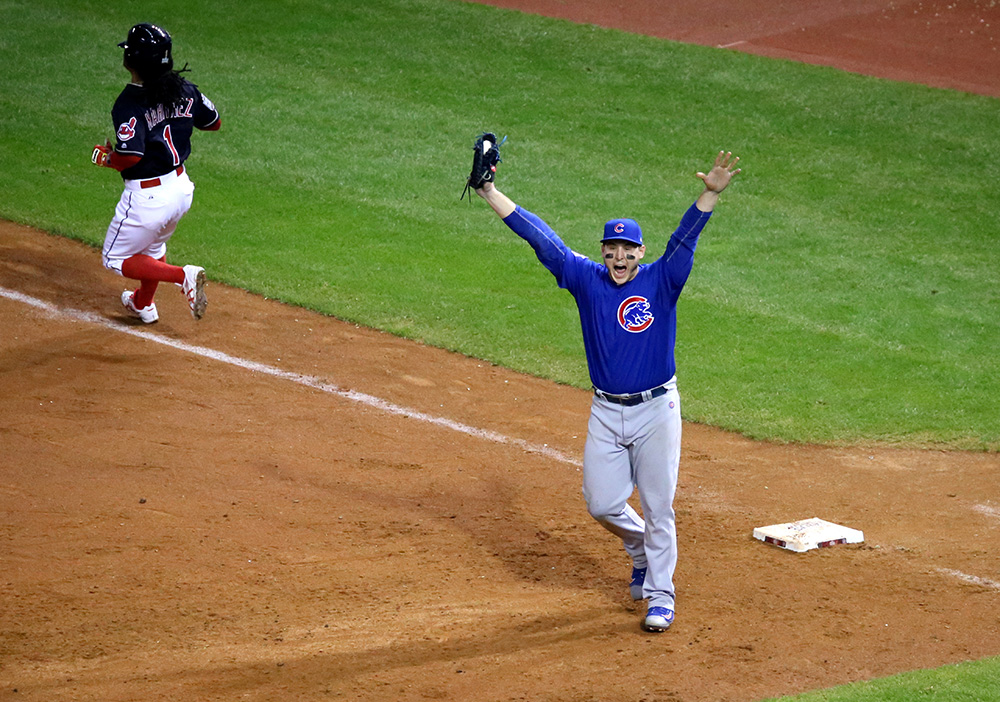Please note this posting contains two positions.
Position Title: Amateur Scouting Fellow
Primary Purpose
The Indians Fellowship program is designed to accelerate the pace of development and impact for high-potential candidates. Fellowship roles are focused on complex challenges, developing new approaches, tools and techniques to meaningfully drive the organization forward.
The Cleveland Indians are seeking two Fellows to join their Amateur Scouting department. Each Fellow will work collaboratively with the amateur scouting staff. Fellows will operate as an extension of the front office staff and be a resource for scouts and Baseball Operations. Fellows will be expected to manage the collection of multiple data streams on amateur players to prepare the organization for acquisition opportunities.
The ideal candidate will be curious, creative, open-minded, and excited to work in a collaborative and rapidly-changing environment. The candidate will have exceptional interpersonal skills and execute the organization’s vision through passion, resourcefulness, curiosity and strategic thinking. They will take the initiative to perform research that advances the Indians’ procedures and philosophies, especially on the draft.
Essential Duties & Responsibilities
Baseball Technology:
- Operate bat/ball tracking technology and other sports science technology.
- Manage video process from all opportunities to assess players, including but not limited to games, workouts and events.
- Manage the corresponding data and video collection process.
Support Scouting Operations:
- Assist scouting staff with the organization and execution of the scouting process through thorough data collection.
- Assist scouting staff with player workouts.
- Assist scouting staff with various administrative and information-gathering tasks.
- Provide holistic player assessments.
- Understand and apply organizational philosophies to all phases of the scouting and information-gathering processes.
Role Requirements and Preferences
Education & Experience Requirements
- Bachelor’s degree
- Demonstrated passion for at least one of scouting, baseball analytics, sports science, hitting or pitching analysis and/or biomechanics, strength and conditioning, motor learning, or other baseball related field.
Skills:
- Organization: Ability to create, maintain and execute a schedule with precision and agility.
- Work Ethic: A relentless drive to collect more and better information.
- Passion: Demonstrate a clear passion for the game, teammates, the organization and learning.
- Resourcefulness: Utilize organizational resources to develop and understand organizational philosophies.
- Self-awareness: Understand your skillset, understand your biases, and recognize your areas of development.
- Strategic Thinking: Employ a problem-solving mindset and strategic thinking.
Job Requirements:
- Excellent written and verbal communication skills.
- Working knowledge of advanced baseball statistics and publicly available research.
- Proficiency with Microsoft Office.
- This position will require travel to games, workouts, and events across the country.
Standard Requirements:
- Reads, speaks, comprehends and communicates English effectively in all communications.
- Represents the Cleveland Indians in a positive fashion to all business partners and the general public.
- Ability to develop and maintain successful working relationship with members of the Front Office.
- Ability to act according to the organizational values and service excellence at all times.
- Ability to work with multicultural populations and have a commitment to fairness and equality.
- Ability to walk, sit or stand for an entire shift.
- Ability to work extended days and hours, including holidays and weekends.
- Ability to move throughout all areas and levels of the Ballpark.
- Ability to work in a diverse and changing environment.
- Occasional physical activity such as lifting and carrying boxes up to 25 lbs.
To Apply
To apply, please complete the application, which can be found here.
Position Title: Baseball Operations Fellow
Primary Purpose
The Indians Fellowship program is designed to accelerate the pace of development and impact for high-potential candidates. Fellowship roles are focused on complex challenges, developing new approaches, tools and techniques to meaningfully drive the organization forward.
The Cleveland Indians are seeking multiple Fellows to join their Baseball Operations department. Each Fellow will work full-time with one of the Indians’ minor league affiliates and report to both the Player Development and Baseball Operations departments. Fellows will operate as an extension of the front office staff and be a resource for both players and coaches. Fellows will be expected to manage the collection of multiple data streams. Fellows will gain exposure across multiple departments and have access to and be encouraged to use a suite of internal, proprietary resources.
The ideal candidate will be curious, creative, open-minded, and excited to work in a collaborative environment. The candidate will have exceptional interpersonal skills and the ability to present complex topics to a wide range of audiences. They will take the initiative to perform research in the areas of their choosing that advances the Indians’ player development procedures and philosophies.
Essential Duties & Responsibilities
Baseball Technology:
- Operate bat/ball tracking technology and other sports science technology.
- Manage pre-game and in-game video process.
- Manage the corresponding data and video collection process and assist with interpretation.
Research and Development:
- Collaborate with coaching staff and player development staff to monitor player goals and player progress.
- Perform ad hoc research and analysis, both at the request of staff and independently.
- Communicate findings and insights to Minor League Coaches, Players, and Player Development and Baseball Operations Department.
Coaching Staff Support:
- Assist Minor League field staff with pre-game on-field activities.
- Assist Minor League field staff with Advance Scouting process.
- Assist affiliate staff with various administrative tasks.
Role Requirements and Preferences
Education & Experience Requirements:
- Bachelor’s degree
- Demonstrated passion for at least one of scouting, baseball analytics, sports science, hitting or pitching analysis and/or biomechanics, strength and conditioning, motor learning, or other baseball related field.
- Conversational Spanish or better a plus
Skills:
- Organization: Ability to create, maintain and execute a schedule with precision and agility.
- Work Ethic: A relentless drive to collect more and better information.
- Passion: Demonstrate a clear passion for the game, teammates, the organization and learning.
- Resourcefulness: Utilize organizational resources to develop and understand organizational philosophies.
- Strategic Thinking: Employ a problem-solving mindset and strategic thinking.
Job Requirements:
- Experience with SQL and statistical software (i.e. R, Python, Stata, SAS) a plus.
- Excellent written and verbal communication skills.
- Working knowledge of advanced baseball statistics and publicly available research.
- Proficiency with Microsoft Office.
- This position will be based at an affiliate and will include travel to away games.
Standard Requirements:
- Reads, speaks, comprehends and communicates English effectively in all communications.
- Represents the Cleveland Indians in a positive fashion to all business partners and the general public.
- Ability to develop and maintain successful working relationship with members of the Front Office.
- Ability to act according to the organizational values and service excellence at all times.
- Ability to work with multicultural populations and have a commitment to fairness and equality.
- Ability to walk, sit or stand for an entire shift.
- Ability to work extended days and hours, including holidays and weekends.
- Ability to move throughout all areas and levels of the Ballpark.
- Ability to work in a diverse and changing environment.
- Occasional physical activity such as lifting and carrying boxes up to 25 lbs.
To Apply
To apply, please complete the application, which can be found here.
The content in this posting was created and provided solely by the Cleveland Indians.




